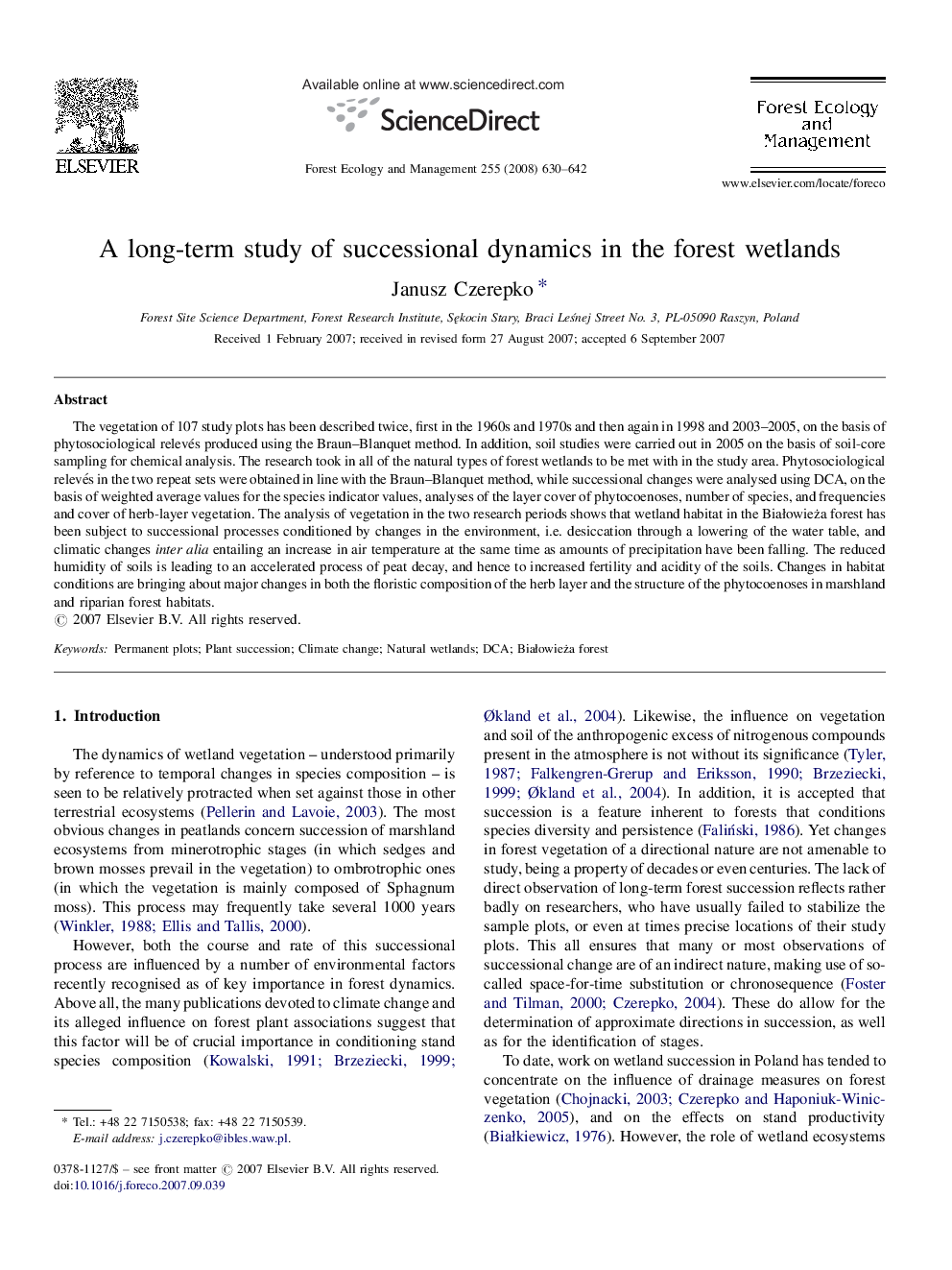| Article ID | Journal | Published Year | Pages | File Type |
|---|---|---|---|---|
| 89840 | Forest Ecology and Management | 2008 | 13 Pages |
The vegetation of 107 study plots has been described twice, first in the 1960s and 1970s and then again in 1998 and 2003–2005, on the basis of phytosociological relevés produced using the Braun–Blanquet method. In addition, soil studies were carried out in 2005 on the basis of soil-core sampling for chemical analysis. The research took in all of the natural types of forest wetlands to be met with in the study area. Phytosociological relevés in the two repeat sets were obtained in line with the Braun–Blanquet method, while successional changes were analysed using DCA, on the basis of weighted average values for the species indicator values, analyses of the layer cover of phytocoenoses, number of species, and frequencies and cover of herb-layer vegetation. The analysis of vegetation in the two research periods shows that wetland habitat in the Białowieża forest has been subject to successional processes conditioned by changes in the environment, i.e. desiccation through a lowering of the water table, and climatic changes inter alia entailing an increase in air temperature at the same time as amounts of precipitation have been falling. The reduced humidity of soils is leading to an accelerated process of peat decay, and hence to increased fertility and acidity of the soils. Changes in habitat conditions are bringing about major changes in both the floristic composition of the herb layer and the structure of the phytocoenoses in marshland and riparian forest habitats.
